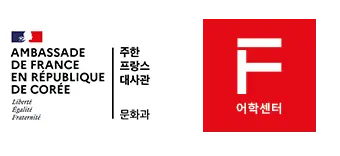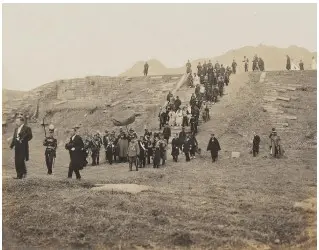Manwŏltae during Emperor Sunjong’s Inspection Tour to the Northwest 1909
Date
Jeudi 1 juin 2023, à 18h
Lieu
Grand Conference Room (Room number 310), the Asiatic Research Institute, Korea University
Plus d’information
Manwŏltae : L’histoire complexe du palais royal du Koryŏ à Kaesong
Sem Vermeersch
Seoul National University
Le site de l’ancien palais des rois du Koryŏ, aujourd’hui habituellement appelé Manwŏltae, est un vaste complexe qui n’a été que partiellement fouillé, et les archives de l’époque du Koryŏ sur ce site sont rares. De plus, il y a très peu d’informations publiées en langues occidentales. Cette présentation essaye de déterminer ce que nous savons au sujet du palais, ce qui reste à découvrir, et ce qui a été déformé. Elle le fera à travers un examen critique du principal témoignage, écrit par l’envoyé chinois Xu Jing, et la manière dont ce témoignage a été utilisé dans la recherche actuelle. Il n’est pas sans ironie de constater que les fouilles archéologiques et recherches académiques contemporaines ont été les plus faibles aux endroits qui pourraient mettre le témoignage de Xu Jing à l’épreuve, c’est-à-dire de la porte d’entrée du palais (porte Kwanghwa [Kwanghwa-mun]) à la salle principale, la salle Hoegyŏng (Hoegyŏng-chŏn). En revanche, ces efforts ont été plus intenses là où son témoignage pose le plus de problèmes—c’est-à-dire pour une grande partie du palais. Certes, le zèle à découvrir de nouvelles informations est ce qui motive les chercheurs, mais il faut parfois apporter des corrections, et c’est ce que nous essaierons de faire en nous concentrant sur la salle Hoegyŏng.
Mots-clefs : royaume de Koryŏ (918–1392), palais royal de Kaesong, Manwŏltae, reconstruction, plan architectural
_______________________________________________________________________________________________________
Manwŏltae: The Complex History of the Koryŏ Royal Palace in Kaesong
Sem Vermeersch
Seoul National University
The site of the former royal palace of the Koryŏ (918-1392) kings, now habitually called Manwŏltae (“full moon terrace”), is a vast complex that has been only partially excavated, and about which Koryŏ-era records are scant. Moreover, very little information has been published in English. This presentation constitutes an attempt at ascertaining what we know about the palace, what might still be uncovered, and what kind of distortions have taken place. It tries to achieve this by a critical review of the main witness account, by the Chinese visitor Xu Jing (1091-1153; visited Koryŏ in 1123), and of the way his testimony (the Koryŏ togyŏng 高麗圖經 1124) has been used in contemporary scholarship. Ironically, for the places where Xu Jing’s testimony can best be tested, from the entrance gate of the palace (Kwanghwa-mun) to the main palace hall, the Hoegyŏng Hall, contemporary archeological and academic efforts have been the weakest. By contrast, where his account is more problematic—for most of the rest of the palace—efforts have been the most intense. Of course the zeal to uncover new information is what drives scholarship, but at times a correction is needed, and here I have tried to do this by focusing on the Hoegyŏng Hall.
Keywords: Koryŏ dynasty (918–1392), Kaesong Royal Palace, Manwŏltae, reconstruction, architectural layout
Sem Vermeersch is an associate professor of department of Religious Studies at Seoul National University. He got a PhD in Korean history, The Power of Buddha : The Ideological and Institutional Role of Bouddhism in the Koryŏ Dynasty (918-1392) at SOAS, University of London. He has published a number of books and articles on Koryŏ history including The Power of the Buddhas: The Politics of Buddhism During the Koryŏ Dynasty, 918-1392 (2008), and A Chinese Traveler in Medieval Korea: Xu Jing’s Illustrated Account of the Xuanhe Embassy to Koryo (2016).
Registration in advance by sending an email to efeoseoul@hotmail.com
Take Exit 1 from Korea University subway station, turn right onto the footpath leading up onto the campus. Walk straight up the road past LG Posco Hall, the Business School and Main Library (all on the right hand side). The Asiatic Research Institute is the building next after the Library (http://oia.korea.ac.kr/listener.do?layout=itd_4_1 )
After 6 pm the front door of the Institute may be locked. If the door is locked, phone to the EFEO Seoul Center (02-921-4526) so that we can let you into the building.

